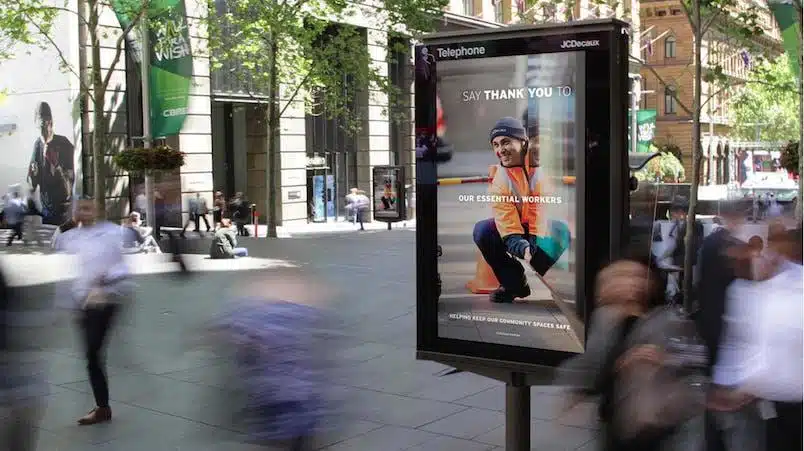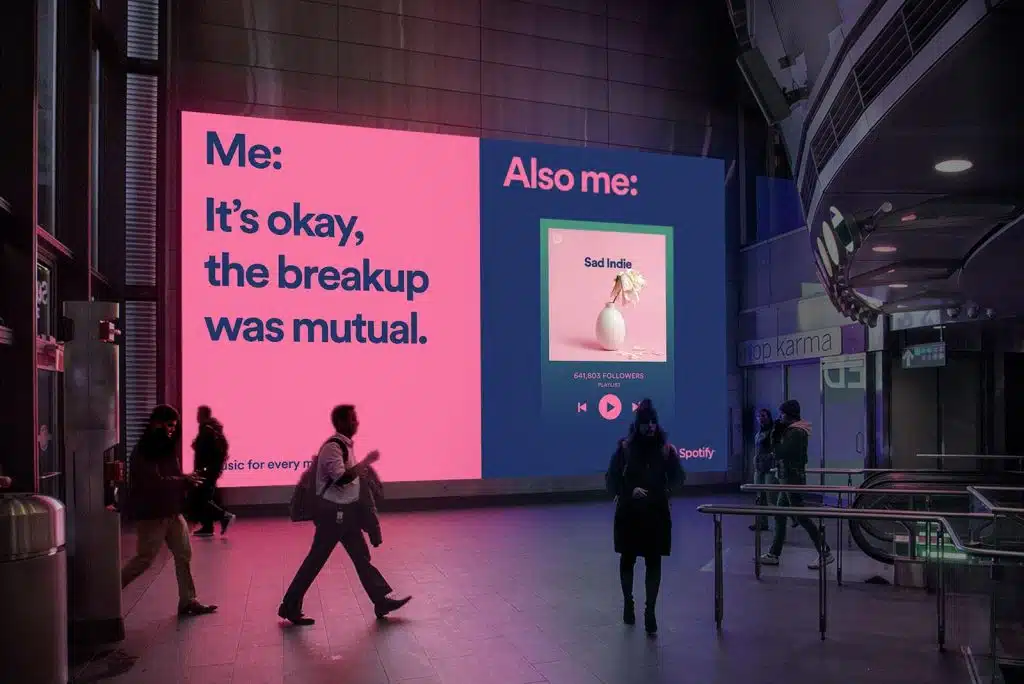Programmatic advertising refers to ads bought using an automated system. This form of media buying has become much more popular over the past decade, as vendors and third parties work out the kinks in the automated systems.
Programmatic has, not surprisingly, caught on much more quickly for digital advertising than anything else. From fairly early on, vendors and third-party platforms automated the process so that digital ads could be purchased interactively. The growth made sense — a digital option for digital ads. Now, by some estimates, more than 90% of worldwide digital ad spending is spent programmatically.
Overall programmatic adoption has swelled in the United States, too. In 2021, the programmatic advertising marketplace accounted for $418 billion. By 2026, that figure will hit $726 billion.
Out of home has embraced this form of selling, too, though traditional OOH sales still account for most spending.
What Is Programmatic OOH?
Programmatic out of home (OOH) is outdoor advertising purchased through an automated system. It may include traditional billboards, digital billboards, transit signage and more.
Not every OOH option you encounter is available for programmatic purchase. The industry remains far from total automation, for many reasons. One is that the cost of setting up a programmatic system, or even partnering with a third-party platform, sits out of the price range for small vendors, especially those with only a handful of boards. Another reason is that OOH has always been a handshake-type medium—deals are often done through relationships,
Still, programmatic availability for OOH has gone way up just in the past five years in the U.S.

How Widespread Is Programmatic OOH?
Programmatic OOH now accounts for 41% of billboard buys, according to first-half 2023 data from eMarketer. That’s up from 39% the year before, though billboards are by far the biggest share of programmatic OOH. The next-highest percentage format, screen/TV, is just 24%. And display panels are third at 14% (actually down three percentage points from last year).
“Programmatic advertising will account for more than 10% of US OOH ad spend and more than 30% of digital OOH ad spend in 2025, according to our forecast,” notes the report.
How Does Programmatic OOH Work?
So, we’ve established what programmatic is and that it’s growing. But how do you actually buy a programmatic OOH ad?
The process will vary slightly according to what platform you use. A big vendor might have its own, or you might log onto a centralized exchange run by a third party that sells the OOH ad space but doesn’t actually own it.
The buy is very similar to purchasing digital media space. You set your budget through the online program that dictates how many impressions you can get through that particular medium. You then bid against other advertisers to get a certain space. You may be able to get more than one location for your budget, depending on your impression level.
Where Do I Find a Programmatic OOH Exchange?
You can find a number of options, but some of the most well-known include:
Note that we’re not endorsing any of these — as a relatively new way to do business, programmatic exchanges have ups and downs.

What Are the Advantages of Programmatic OOH?
An obvious advantage of programmatic, whether it’s OOH or another medium, is the speed of the transaction. With automation, you can make your buy quickly. You can gauge what’s available, decide on your strategy, and go after the inventory. With other forms of traditional media, it can take longer to hammer out a deal.
Programmatic OOH makes sense for an advertiser that wants to tackle a national campaign. You can examine prices across markets and find a range of possibilities more easily than contacting individual vendors across different cities. You may also discover billboards or other OOH signage you didn’t know was available.
Another upside to programmatic is that the impression counts sometimes have more concrete data behind them than other measurement companies whose methodologies have been called into question. While measurement has always been a murky area for out of home, the apples-to-apples approach used to calculate billboard and other impressions for the programmatic market (like mobile pings) is generally reliable.
Programmatic also simplifies buying multiple locations. You can do it with the click of a button vs. having to negotiate prices for 10 spots. And, of course, if you purchase a digital billboard, you can get the creative up fast, with a second click, and not have to think about it again for weeks.
What Are the Disadvantages of Programmatic OOH?
Programmatic OOH isn’t perfect. While it may be a good solution for some advertisers, it won’t be the right fit for others. First, there’s a steep learning curve, especially if you have little background in technology. You can’t really play around with the exchange to get the hang of it because, obviously, you’d be spending money, and that’s not cost-effective.
Second, you only get the automated price on the exchange. There’s no meeting the salesperson face to face to hash out a deal. There’s no connecting over lunch or bonding over a shared love of a sports team. And so there’s no possibility of haggling for a lower deal and getting that lower deal based on the bond you’ve built from face time.
Third, it’s not entirely practical if you just want to buy one location, with the hassle of having to sign up and pay digitally and possibly not use the exchange in the future. Again, a face-to-face deal could lead to greater added value and less short- and long-term hassle.
Finally, some buyers avoid programmatic because of the inconsistencies related to technology, measurement and data. What you see from one company may not match what you get from another. That makes comparing across ecosystems too challenging.
Should You Use Programmatic Out of Home?
Instead of trying to decide based on a blog post, which can only tell you so much, why don’t you talk to us, and we can help you figure it out. Every advertiser’s situation is different. You should make decisions based on those unique considerations. Reach out today.

